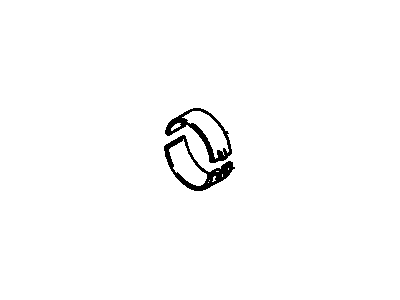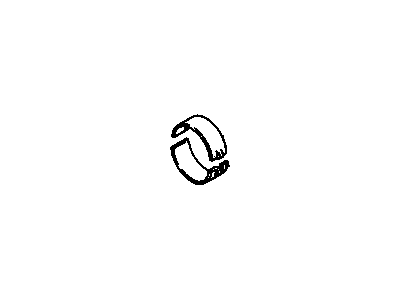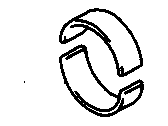My Garage
My Account
Cart
Genuine Chevrolet Tracker Rod Bearing
Engine Connecting Rod Bearing- Select Vehicle by Model
- Select Vehicle by VIN
Select Vehicle by Model
orMake
Model
Year
Select Vehicle by VIN
For the most accurate results, select vehicle by your VIN (Vehicle Identification Number).
8 Rod Bearings found
Chevrolet Tracker Bearing,Connect Rod
Part Number: 96063387$21.96 MSRP: $44.28You Save: $22.32 (51%)Ships in 1-2 Business DaysChevrolet Tracker Bearing Set,Connrod,Std,T:1.5 (On Esn)
Part Number: 96063386$8.61 MSRP: $49.26You Save: $40.65 (83%)Ships in 1-2 Business DaysChevrolet Tracker Bearing,Connect Rod
Part Number: 91177277$4.27 MSRP: $25.76You Save: $21.49 (84%)Ships in 1-2 Business DaysChevrolet Tracker Bearing,Connect Rod
Part Number: 91177276$4.62 MSRP: $25.67You Save: $21.05 (82%)Ships in 1-2 Business Days
Chevrolet Tracker Rod Bearing
Each OEM Chevrolet Tracker Rod Bearing we offer is competitively priced and comes with the assurance of the manufacturer's warranty for the part. Furthermore, we guarantee the speedy delivery of your orders right to your doorstep. Our hassle-free return policy is also in place for your peace of mind.
Chevrolet Tracker Rod Bearing Parts Questions & Experts Answers
- Q: What is the importance of retaining old main and connecting rod bearings during engine inspection on Chevrolet Tracker?A: The old main and connecting rod bearings should be kept for examination during the engine inspection because they contain useful information about the condition of the engine. So, before rebuilding the engine, some causes of bearing failure that must be addressed include inadequate lubrication, foreign particle contamination, engine overloading, and corrosion. The bearings should be removed from their locations in the engine block, main bearing caps, connecting rods, and rod caps during inspection and placed on a clean surface so that any problem with them can be matched to a corresponding Crankshaft journal. Residues from assembly processes or exhaust gas recirculation (EGR) systems as well as fuel delivery systems can also cause foreign particles to become embedded in bearing material leading to score marks or grooves. Proper cleaning and maintenance practices along with regular oil and filter changes are good prevention measures. Lubrication breakdown resulting from excessive heat in an overloaded condition or oil leakage due to blocked oil passages may necessitate bearing failure which is characterized by extrusion of bearing material out of the steel backing causing overheating. In addition to fatigue failure, corrosion may also shorten bearing life through driving habits such as full-throttle/low-speed operation or short-trip driving. During assembly of the engine if incorrect installation of bearings occurs there will be no oil supply or there will be a buildup of foreign materials behind insertions that will result in areas of higher than average contact pressure which finally breaks down. A thorough engine rebuild generally requires new bearings when worn-out or damaged ones are replaced or wrong clearances improved upon with regard to oil use. It is normally possible for an automotive machine shop that reconditions crankshafts to determine correct size bearings usually in increments such as 0.010" where a mark indicates how much machining was done on them.The last step should therefore include measurements by Plastigage as guides towards choosing proper bearing sizes; otherwise assistance can always be got from either machine shop/ dealer parts or the service department in case of any doubts regarding the right bearing choice.












